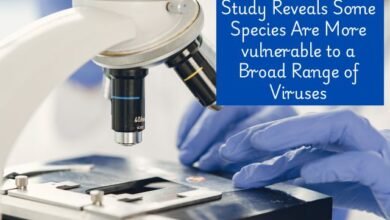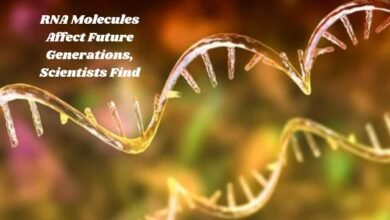5 Popular Science Facts That Are Completely Wrong
Discover 5 Popular Science Facts that are actually false. Learn the truth behind these widely believed myths in this eye-opening article.

We’ve all heard certain science facts that everyone seems to believe but some of them are not true at all. Over time, these ideas have been accepted as fact even though science proves them wrong. In this article, we’ll look at 5 Popular Science Facts That Are Completely Wrong & explain what’s actually true. Get ready to learn the real facts behind these common myths!
Table of Contents
5 Popular Science Facts That Are Totally Wrong
1. Can Nothing Travel Faster Than Light? Not Quite!
We’ve often heard that nothing can travel faster than light especially since Einstein’s theory of relativity came along. It’s true that in space, light travels at an incredible speed of about 300,000 kilometers per second. However, this isn’t always the case. The idea that light is the fastest thing in the universe depends on the conditions and there are some situations where things can actually move faster.
When light passes through materials like glass or water it slows down by about a third of its normal speed. While that’s still extremely fast, it shows that light isn’t always unbeatable. In even more advanced experiments, scientists have been able to slow light down to walking speed and incredibly, even stop it altogether! This means that, technically, things can move faster than light but only in special conditions with right materials and technology. So, while speed of light is impressive it’s not always the ultimate speed limit we once thought!
2. Was Sputnik the First Object in Space? Not Exactly!
We often hear that Sputnik 1, launched by the Soviet Union on October 4, 1957, was the first man-made object in space. While it’s true that Sputnik made history as the first human-made satellite to orbit Earth, it wasn’t actually the first object to reach space.
Before Sputnik, many rockets had already gone beyond the edge of space. During World War II, Germany launched hundreds of V-2 missiles, which flew high enough to reach space but didn’t stay there. These missiles would rise above the Earth’s atmosphere and then fall back to the ground in a destructive path. So, technically, the V-2 rockets were the first objects to enter space, even though they weren’t built for exploration.
Sputnik’s achievement was groundbreaking because it stayed in orbit around Earth for three months, paving the way for space exploration. But when it comes to being the first object in space, credit goes to the German V-2 missiles.
3. Is Glass a Liquid? Nope, It’s a Solid!
You might have heard the idea that glass is a liquid especially if you’ve ever toured an old building. People sometimes point out that the glass in old windows is thicker at the bottom and claim that it’s because glass flows downward over time like a very slow-moving liquid. While this explanation sounds believable, it’s actually not true.
The reason old glass is thicker at the bottom has nothing to do with it being a liquid. It’s because of how glass was made in the past. Early glassmaking methods weren’t perfect, and the glass panes produced were often uneven, with thicker parts. When installing these uneven glass panes, builders would place the thicker side at the bottom for stability. This is why the glass in old windows looks thicker at the base.
So, glass is actually a solid, not a liquid and the uneven thickness in old windows is just due to the limitations of glassmaking technology back then!
4. Were Fish the First Animals to Leave the Oceans? Not Really!
We’ve all seen pictures of ancient fish crawling onto land, starting journey that would eventually lead to animals like reptiles, birds, mammals and humans. Many people believe that fish were first creatures to leave the ocean and start life on land. However, this isn’t entirely true.
Long before fish ventured onto land, there was already plenty of life thriving on dry ground. Insects, millipedes, plants and fungi had already made their way onto land millions of years earlier. While those brave fish were important for evolving into new types of land animals, they weren’t the first pioneers. The land was already filled with other living things even if they weren’t as big or noticeable as the fish.
So, while fish did play a big role in history of life on land they were not the first to leave the oceans. In fact, life on land had already been flourishing for a long time!
- Sunita Williams Returns to Spacewalks After 12 Years
- Biomimicry: Learning Innovation from Nature
- Using copper to convert CO₂ to methane could be game changer in mitigating climate change
5. Is Your Body Completely Your Own? Not Quite!
It might seem like your body is entirely yours but that’s not really the case. In fact about half of the cells in your body aren’t even human! Your body is full of tiny organisms like bacteria, fungi, and other microorganisms that live inside you. There are between 500 and 1,000 different species of these little creatures living in your body, and they exist in huge numbers.
But that’s not the only surprising thing. Even your human cells might not all be your own. Many mothers carry cells from their babies, a process called microchimerism. These cells stay in the mother’s body and can continue to live and divide alongside her own cells, even though they’re genetically different. In some cases, these cells can even be passed on to future children.
- Why I Skip Achievements in Games
- How to Spot a Fake Review on Amazon
- Here are 5 Ways to See Deleted Reddit Posts
- ISRO’s Ambitious Future: Chandrayaan-4, Gaganyaan, Shukrayaan
So, your body isn’t just made up of your own cells; it’s also mix of other living organisms & in some cases cells from your family members!



